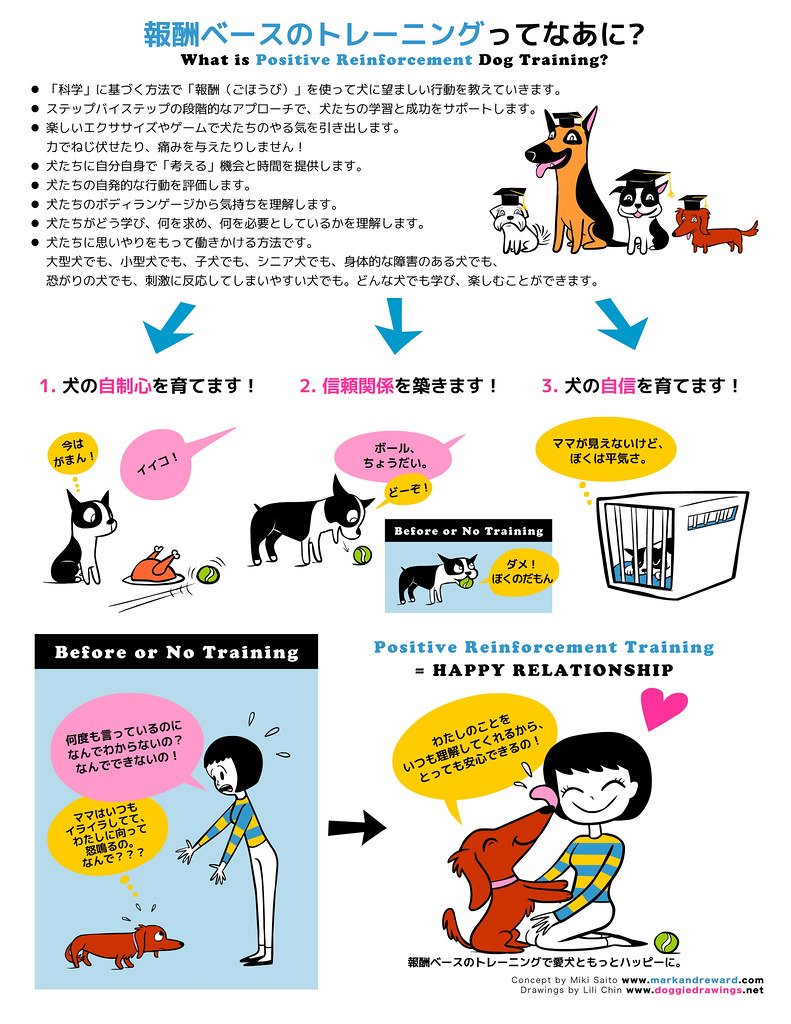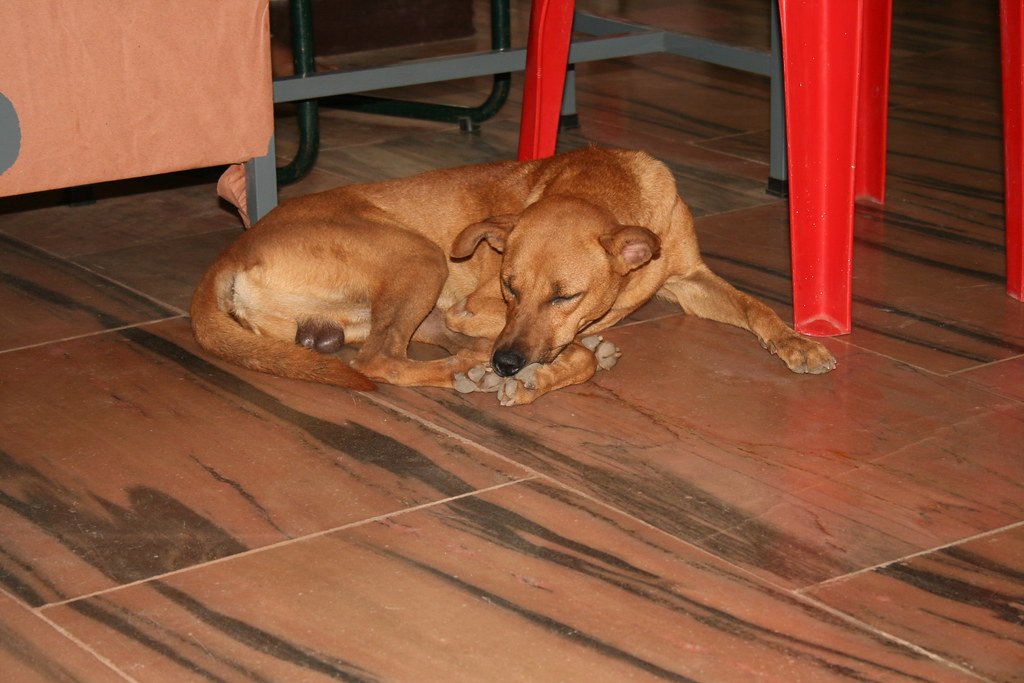Dashing across the green meadows, their noses eagerly sniffing the air for hidden treasures, dogs have always been creatures of untamed spirit and captivating instincts. However, lurking beneath this façade of innocence lies a primal drive: territorial behavior. Yes, even the most playful and affectionate pooches can succumb to the urge to defend what they believe is rightfully theirs. But fear not! In the pursuit of harmony between man and hound, we unravel the secrets of harnessing positive reinforcement to tame territorial tendencies. So fasten your seatbelts, pet lovers, for we are about to embark on a journey where boundaries are respectfully upheld and wagging tails prosper in the realm of positive reinforcement solutions for territorial behavior in dogs.
Table of Contents
- Understanding Territorial Behavior in Dogs
- The Role of Positive Reinforcement in Managing Territorial Behavior
- Creating a Positive Environment to Reduce Territorial Behavior
- Implementing Effective Training Techniques for Territorial Dogs
- Maintaining Consistency and Persistence for Long-term Solution
- Q&A
- The Way Forward

Understanding Territorial Behavior in Dogs
Dogs are known to exhibit territorial behavior, which is an innate instinct passed down from their wolf ancestors. This behavior is displayed when a dog establishes and defends its territory against perceived threats. Understanding this behavior can help dog owners provide a safe and comfortable environment for their pets.
Common signs of territorial behavior in dogs include:
- Raised hackles
- Excessive barking or growling
- Guarding possessions or areas
- Marking with urine
- Aggressive posturing
It is important to note that not all dogs exhibit territorial behavior to the same extent, as individual personalities and experiences can influence their reactions.
To help manage and address territorial behavior in dogs, it is crucial to establish clear boundaries and provide proper training. Here are some tips:
- Socialize your dog: Expose your dog to a variety of people, animals, and environments to increase their comfort level and reduce territorial tendencies.
- Positive reinforcement: Reward your dog’s good behavior when they appropriately respond to potential triggers without displaying territorial behavior.
- Seek professional help: If your dog’s territorial behavior becomes excessive or uncontrollable, consult a professional dog trainer or behaviorist for expert guidance.
By taking the time to understand territorial behavior in dogs and implementing appropriate training techniques, dog owners can create a harmonious and well-balanced living environment for both their furry friend and family.

The Role of Positive Reinforcement in Managing Territorial Behavior
Territorial behavior is a common instinct in many animals, including humans. It is a response that typically involves the defense and protection of one’s personal space or territory. While it may be natural, excessive territorial behavior can lead to conflicts and tension in both personal and professional relationships. This is where positive reinforcement plays a crucial role in managing territorial behavior.
1. Redirecting focus: Positive reinforcement techniques can help shift an individual’s focus from defending their territory to more constructive behaviors. By rewarding desirable actions that promote collaboration, respect, and cooperation, individuals are encouraged to engage in behaviors that are beneficial to all parties involved.
2. Encouraging empathy: Understanding and empathizing with others is a fundamental aspect of managing territorial behavior. By using positive reinforcement, individuals are not only rewarded for their own positive actions but also for displaying empathy towards others. This helps foster a sense of understanding and promotes healthier relationships based on mutual respect.
3. Creating a positive environment: Positive reinforcement provides a framework for creating a positive and supportive environment. By praising and acknowledging individuals who demonstrate non-territorial behaviors, a culture of inclusivity and teamwork can be established. This encourages everyone to contribute their unique strengths and perspectives without feeling threatened by territorial conflicts.
In conclusion, positive reinforcement plays a vital role in managing and mitigating territorial behavior. By redirecting focus, encouraging empathy, and fostering a positive environment, it enables individuals to develop healthier relationships and work collaboratively towards common goals.
Creating a Positive Environment to Reduce Territorial Behavior
When it comes to creating a positive environment that promotes harmony and reduces territorial behavior, there are a few key strategies to keep in mind. By implementing these practices, we can foster a sense of community and foster cooperation among individuals:
- Encourage open communication: Establishing clear channels of communication allows for the expression of thoughts, concerns, and ideas. By encouraging open dialogue and active listening, we can address potential conflicts and misunderstandings before they escalate.
- Promote inclusivity: Emphasize the importance of inclusivity by celebrating diversity and recognizing the strengths and contributions of every individual. By creating an environment where everyone feels valued and respected, we can diminish tendencies for territorial behavior.
- Nurture a collaborative mindset: Encourage collaboration and teamwork, as opposed to competition or individualism. By fostering an atmosphere where individuals understand the benefits of working together towards common goals, territorial behavior can be minimized.
Remember, creating a positive environment is an ongoing process that requires consistent effort and commitment from all members involved. By following these guidelines and promoting a sense of unity, we can cultivate a space where territorial behavior becomes a thing of the past.

Implementing Effective Training Techniques for Territorial Dogs
If you have a dog that tends to be territorial, it’s important to implement effective training techniques to ensure their behavior is manageable and they feel secure in their environment. Here are some tips and strategies to help you on your training journey:
- Socialization: Start by socializing your dog from a young age. Introduce them to various situations, people, and animals to help them become comfortable and confident in different environments.
- Consistency: Be consistent in your training approach. Dogs thrive on routine and repetition, so establish clear rules and boundaries that you consistently enforce.
- Positive Reinforcement: Use positive reinforcement techniques such as treats, praise, and rewards to encourage desired behavior. This will help your dog associate positive experiences with good behavior.
- Desensitization: Gradually expose your territorial dog to triggers that elicit their protective instincts, such as people approaching your property. Use counter-conditioning techniques to replace their negative response with a more desired behavior.
- Redirected Focus: Train your dog to redirect their focus away from territorial behavior towards more appropriate activities, such as playing with toys or engaging in interactive games.
- Professional Help: If you’re struggling with training your territorial dog, consider seeking assistance from a professional dog trainer or behaviorist. They can provide valuable insights, personalized strategies, and ongoing support.
Remember, with patience, consistency, and the right training techniques, you can help your territorial dog become a well-adjusted and confident companion.
Maintaining Consistency and Persistence for Long-term Solution
When it comes to achieving long-term success, consistency and persistence are key factors that cannot be overlooked. Whether it’s in personal or professional endeavors, maintaining a consistent approach and staying persistent in the face of challenges is crucial for attaining sustainable solutions.
To ensure consistency, it is imperative to establish clear goals and outline a well-defined plan of action. By breaking down bigger objectives into smaller, manageable tasks, you not only make your journey more attainable but also allow yourself to track progress along the way.
Being persistent, on the other hand, requires unwavering determination and resilience. Remember, setbacks and obstacles are inevitable, but it is the ability to rise above them that sets successful individuals apart. Embrace challenges as opportunities for growth, learn from your mistakes, and continue pushing forward. Surround yourself with a supportive network and seek guidance when needed.
To summarize, maintaining consistency and persistence forms the foundation for long-term solutions. Stay focused, adapt when necessary, and never lose sight of your ultimate objectives. Remember, Rome wasn’t built in a day, and neither is lasting success.
- Establish clear goals and break them down into smaller tasks for easier monitoring.
- Embrace challenges and view them as opportunities for growth.
- Surround yourself with a supportive network and seek guidance when needed.
- Stay focused on your ultimate objectives and adapt as necessary along the way.
Consistency and persistence may seem daunting at times, but they hold the power to create lasting change and unlock the door to long-term solutions.
Q&A
Why do dogs exhibit territorial behavior?
Dogs exhibit territorial behavior for a variety of reasons, ranging from natural instincts to protect their home and family to a need for boundaries and a sense of security. It can also be influenced by past experiences and socialization.
What are some signs of territorial behavior in dogs?
Signs of territorial behavior in dogs include barking or growling at strangers or other animals near their territory, displaying aggressive or defensive body language, marking their territory with urine, and guarding their possessions.
Is territorial behavior in dogs always a problem?
Territorial behavior becomes problematic when it escalates to aggression towards people or other animals, or when it causes significant stress or disruption in a dog’s life or the household. However, mild displays of territorial behavior can be normal and manageable.
How can positive reinforcement help address territorial behavior?
Positive reinforcement, such as rewarding desired behavior with treats or praise, can be an effective tool in addressing territorial behavior. By rewarding calm and non-aggressive behavior, dogs can learn that appropriate behavior is more rewarding, thereby reducing territorial tendencies.
What are some practical solutions to manage territorial behavior?
Practical solutions to manage territorial behavior in dogs include providing clear and consistent boundaries, ensuring regular exercise and mental stimulation, desensitizing dogs to triggers that cause territorial responses, and seeking professional help if the behavior persists or escalates.
Can territorial behavior in dogs be completely eliminated?
Complete elimination of territorial behavior may not always be possible, as it is a natural instinct for dogs. However, through proper training and management techniques, it is possible to minimize and control the intensity and frequency of territorial displays in most dogs.
The Way Forward
As the landscape of our modern society continues to evolve, so too does the behavior of our beloved furry companions. Territoriality in dogs, a prominent instinct deeply ingrained within their DNA, often presents unique challenges for their owners. But fear not, for positive reinforcement solutions offer a glimmer of hope in navigating these uncharted territories.
Throughout this insightful exploration, we have delved into the intricate world of territorial behavior in dogs, traversing its origins, manifestations, and potential solutions with a compassionate eye. We have witnessed the fierce loyalty dogs possess for their domain, the unwavering determination to protect what they perceive as rightfully theirs.
Understanding these instinctive tendencies is crucial to forging a harmonious bond between owner and pet. By appreciating the underlying logic behind their territorial behavior, we can respond with empathy, compassion, and an air of creativity.
The realm of positive reinforcement solutions opens a door of possibilities for both dog and human alike. We have learned how patience and consistency can tame the unruly beast of territoriality, transforming it into refined manners and social grace. Through the power of treats, praise, and gentle redirection, we can gently guide our canine companions towards a more balanced and tranquil state of mind.
Let us not forget the many case studies that have illuminated our path throughout this journey. The tales of once-aggressive dogs now basking in the warm glow of newfound harmony within their surroundings. These heartwarming stories remind us that change is within reach, that with dedication and love, we can overcome the hurdles that territorial behavior presents.
As we conclude this compelling exposition, armed with newfound knowledge and an empathetic perspective, we embrace the opportunity to cultivate a world where dogs and their territorial instincts can coexist harmoniously with the humans who share their lives. Positive reinforcement stands as a beacon of hope, beckoning us towards a future where boundaries blur, and unconditional love prevails.
So, let us embark on this transformative adventure, not as adversaries against our dogs’ territorial nature, but as allies, united in our pursuit of understanding, compassion, and positive reinforcement. Together, we can carve a path towards a world where territorial behavior in dogs is no longer a daunting challenge, but a testament to the unwavering bond we share with our four-legged companions.
As an affiliate, my content may feature links to products I personally use and recommend. By taking action, like subscribing or making a purchase, you’ll be supporting my work and fueling my taco cravings at the same time. Win-win, right?
Want to read more? Check out our Affiliate Disclosure page.